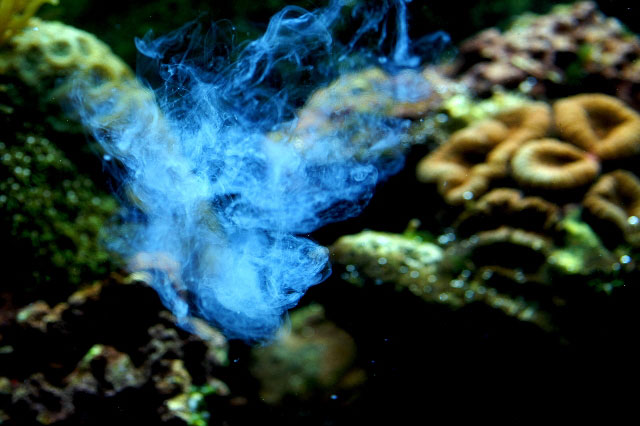Hi everyone,
I am new to this forum but I hope some of you can help me with this curious observation/problem.
I am 2 part dosing (well I am doing the balling light method with trace elements), i change the recipe to use soda ash (Carbonate) instead of the normal baking soda (Bicarbonate) and doubled the calcium recipe from the normal balling light. Thats 84 grams Carbonate per liter and 143 grams Calcium per liter. Im dosing 1,5 x the Iodine recipe to compensate for the added concentration of the Carbonate to Bicarbonate change and 2 x the Strontium/Heavy metals recipe for the increase in concentration of calcium.
This has been working fine for a very long time, stable values and good growth in the corals. Latest value where : PH 8,15-8,35 during the day (Apex), KH 9,1 (Hannah), Calcium 370 (Salifert), Magnesium 1350 (Salifert), Temp around 80 degree fahrenheit (very stable).
Changes within the last 6 months:
Changed from Bicarbonate to Carbonate on October 26th last year.
Doubled the Calcium concentration on November 30th last year.
Increased the KH from 7,8-8,0 to around 9,0 (Increase in sps frags, so for added growth).
Everything else is more or less "very" stable.
NOW!, when my computer doses the Carbonate, the moment of impact for the liquid with the aquarium water the carbonate liquid turns into these white/milky substance "stringy/clumps". It seems to dissolve quite quickly, but in the return chamber where the dosing happens, there are some layers of hardened residue on the bottom glad. The KH is as I said quite stable, no equipment has been damaged nor needs ekstra cleaning from this. Corals do not seem to be effected and there has been no coral or fish casualties either.
Now I will be honest, I am not sure as to how long this has been a "issue" but the residue in the return chamber suggests that its not a new issue but have been going on for at least a few weeks.
What could be the problem?.
I am new to this forum but I hope some of you can help me with this curious observation/problem.
I am 2 part dosing (well I am doing the balling light method with trace elements), i change the recipe to use soda ash (Carbonate) instead of the normal baking soda (Bicarbonate) and doubled the calcium recipe from the normal balling light. Thats 84 grams Carbonate per liter and 143 grams Calcium per liter. Im dosing 1,5 x the Iodine recipe to compensate for the added concentration of the Carbonate to Bicarbonate change and 2 x the Strontium/Heavy metals recipe for the increase in concentration of calcium.
This has been working fine for a very long time, stable values and good growth in the corals. Latest value where : PH 8,15-8,35 during the day (Apex), KH 9,1 (Hannah), Calcium 370 (Salifert), Magnesium 1350 (Salifert), Temp around 80 degree fahrenheit (very stable).
Changes within the last 6 months:
Changed from Bicarbonate to Carbonate on October 26th last year.
Doubled the Calcium concentration on November 30th last year.
Increased the KH from 7,8-8,0 to around 9,0 (Increase in sps frags, so for added growth).
Everything else is more or less "very" stable.
NOW!, when my computer doses the Carbonate, the moment of impact for the liquid with the aquarium water the carbonate liquid turns into these white/milky substance "stringy/clumps". It seems to dissolve quite quickly, but in the return chamber where the dosing happens, there are some layers of hardened residue on the bottom glad. The KH is as I said quite stable, no equipment has been damaged nor needs ekstra cleaning from this. Corals do not seem to be effected and there has been no coral or fish casualties either.
Now I will be honest, I am not sure as to how long this has been a "issue" but the residue in the return chamber suggests that its not a new issue but have been going on for at least a few weeks.
What could be the problem?.














